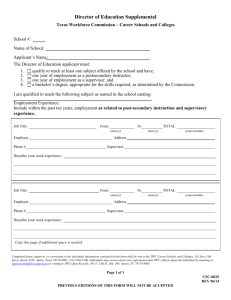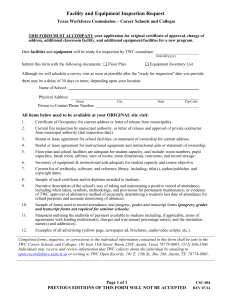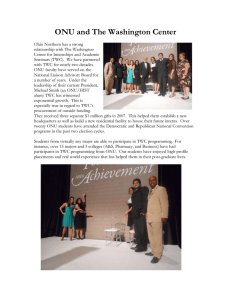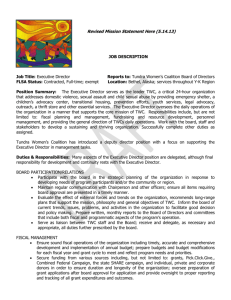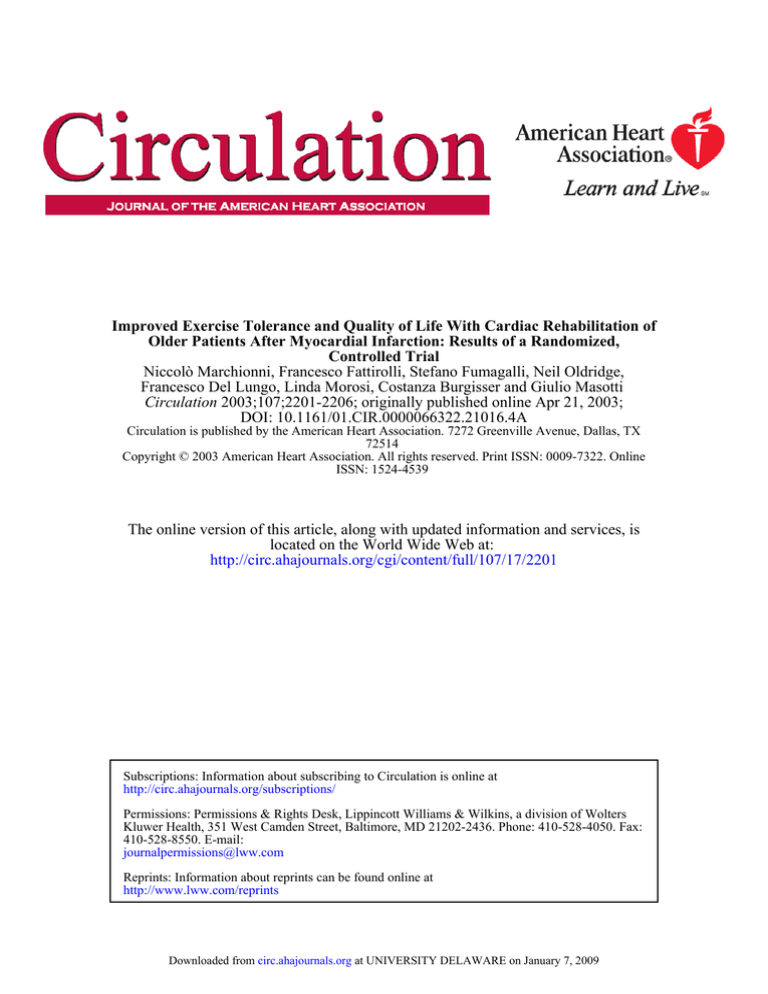
Improved Exercise Tolerance and Quality of Life With Cardiac Rehabilitation of
Older Patients After Myocardial Infarction: Results of a Randomized,
Controlled Trial
Niccolò Marchionni, Francesco Fattirolli, Stefano Fumagalli, Neil Oldridge,
Francesco Del Lungo, Linda Morosi, Costanza Burgisser and Giulio Masotti
Circulation 2003;107;2201-2206; originally published online Apr 21, 2003;
DOI: 10.1161/01.CIR.0000066322.21016.4A
Circulation is published by the American Heart Association. 7272 Greenville Avenue, Dallas, TX
72514
Copyright © 2003 American Heart Association. All rights reserved. Print ISSN: 0009-7322. Online
ISSN: 1524-4539
The online version of this article, along with updated information and services, is
located on the World Wide Web at:
http://circ.ahajournals.org/cgi/content/full/107/17/2201
Subscriptions: Information about subscribing to Circulation is online at
http://circ.ahajournals.org/subscriptions/
Permissions: Permissions & Rights Desk, Lippincott Williams & Wilkins, a division of Wolters
Kluwer Health, 351 West Camden Street, Baltimore, MD 21202-2436. Phone: 410-528-4050. Fax:
410-528-8550. E-mail:
journalpermissions@lww.com
Reprints: Information about reprints can be found online at
http://www.lww.com/reprints
Downloaded from circ.ahajournals.org at UNIVERSITY DELAWARE on January 7, 2009
Improved Exercise Tolerance and Quality of Life
With Cardiac Rehabilitation of Older Patients After
Myocardial Infarction
Results of a Randomized, Controlled Trial
Niccolò Marchionni, MD; Francesco Fattirolli, MD; Stefano Fumagalli, MD; Neil Oldridge, PhD;
Francesco Del Lungo, MD; Linda Morosi, MD; Costanza Burgisser, MD; Giulio Masotti, MD
Background—Whether cardiac rehabilitation (CR) is effective in patients older than 75 years, who have been excluded
from most trials, remains unclear. We enrolled patients 46 to 86 years old in a randomized trial and assessed the effects
of 2 months of post–myocardial infarction (MI) CR on total work capacity (TWC, in kilograms per meter) and
health-related quality of life (HRQL).
Methods and Results—Of 773 screened patients, 270 without cardiac failure, dementia, disability, or contraindications to
exercise were randomized to outpatient, hospital-based CR (Hosp-CR), home-based CR (Home-CR), or no CR within
3 predefined age groups (middle-aged, 45 to 65 years; old, 66 to 75 years; and very old, ⬎75 years) of 90 patients each.
TWC and HRQL were determined with cycle ergometry and Sickness Impact Profile at baseline, after CR, and 6 and
12 months later. Within each age group, TWC improved with Hosp-CR and Home-CR and was unchanged with no CR.
The improvement was similar in middle-aged and old persons but smaller, although still significant, in very old patients.
TWC reverted toward baseline by 12 months with Hosp-CR but not with Home-CR. HRQL improved in middle-aged
and old CR and control patients but only with CR in very old patients. Complications were similar across treatment and
age groups. Costs were lower for Home-CR than for Hosp-CR.
Conclusions—Post-MI Hosp-CR and Home-CR are similarly effective in the short term and improve TWC and HRQL in
each age group. However, with lower costs and more prolonged positive effects, Home-CR may be the treatment of
choice in low-risk older patients. (Circulation. 2003;107:2201-2206.)
Key Words: aging 䡲 coronary disease 䡲 exercise 䡲 myocardial infarction 䡲 quality of life
C
ardiac rehabilitation (CR) after myocardial infarction
(MI) improves exercise tolerance, coronary risk factors,
psychological well-being, and health-related quality of life
(HRQL) in randomized, controlled trials.1 Meta-analyses
suggest that CR also reduces long-term mortality,2,3 but none
of the 4300-plus patients in the 2 earlier meta-analyses2,3 and
none of the 7600-plus patients in the most recent meta-analysis4 were older than 75 years. Furthermore, in the most
recent trial of CR in the elderly, the average age was only 71
years.5 Such a limited generalizability of results of CR trials
to the older population identifies an important research gap.1
Only limited age-specific data are available from trials
with an average patient age ⬍75 years5–13 and from observational studies of post-MI CR with small numbers of patients
⬎75 years of age.14 –16 In particular, whether CR improves
exercise tolerance similarly in patients younger and older
than 75 years remains uncertain. Indeed, with only 6% of 778
patients ⬎75 years of age in the largest observational study,16
its conclusion of a similar percent improvement in exercise
tolerance after training in patients younger and older than 75
years is questionable. Furthermore, whether CR has positive
effects on HRQL6,17 has received limited attention in older
post-MI patients.5
Mobility problems and difficulties in using public transportation may limit the participation in outpatient, supervised,
hospital-based CR (Hosp-CR) of older individuals for whom
home-based CR (Home-CR) might be a valid alternative. In
selected low-risk, middle-aged post-MI patients, Home-CR is
safe and effective,18 but its feasibility and efficacy have never
been explored in older adults.19 –22
We designed the Cardiac Rehabilitation in advanced Age
(CR-AGE) randomized trial to test the hypothesis that 2
Received November 1, 2002; revision received February 13, 2003; accepted February 18, 2003.
From the Department of Critical Care Medicine and Surgery (N.M., F.F., S.F., F.D.L., L.M., C.B., G.M.), Unit of Gerontology and Geriatric Medicine,
University of Florence and Azienda Ospedaliera Careggi, Florence, Italy, and the Center for Aging Research (N.O.), Schools of Allied Health Sciences
and Medicine, Indiana University, Regenstrief Institute for Health Care, Indianapolis, Ind, and the Center for Urban Population Health, University of
Wisconsin-Milwaukee, Wis.
Correspondence to Niccolò Marchionni, MD, Department of Critical Care Medicine and Surgery, University of Florence, Via delle Oblate, 4. 50141
Florence, Italy. E-mail nmarchionni@unifi.it
© 2003 American Heart Association, Inc.
Circulation is available at http://www.circulationaha.org
DOI: 10.1161/01.CIR.0000066322.21016.4A
2201
Downloaded from circ.ahajournals.org at UNIVERSITY
DELAWARE on January 7, 2009
2202
Circulation
May 6, 2003
months of post-MI Hosp-CR or Home-CR would improve
exercise tolerance (primary outcome) compared with no CR
(control) and that the extent of this improvement would be
independent of age. Secondary objectives of the trial included
a comparison of the effects of Hosp-CR and Home-CR on
HRQL and on healthcare utilization.23
Methods
Patients
The trial design has been detailed elsewhere.23 Patients older than 45
years consecutively referred to our CR unit by 4 of the 6 intensive
care units in the Florence area for functional evaluation 4 to 6 weeks
after MI over a 48-month period were eligible if they had none of the
following exclusion criteria: severe cognitive impairment or physical
disability, left ventricular ejection fraction ⬍35%, contraindications
to vigorous physical exercise, eligibility for myocardial revascularization because of low-effort myocardial ischemia, refusal, or living
too far from the CR unit. An ad hoc ethics committee approved the
trial, informed consent was systematically obtained, and a letter
describing the trial design was delivered to patients’ family
physicians.
An age- and gender-stratified factorial design was used, with 3 age
groups predefined as middle-aged (45 to 65 years), old (66 to 75
years), and very old (⬎75 years). Age ⬎75 years identified the very
old patients because they traditionally have been excluded from CR
trials and are characterized by high healthcare utilization.24 Within
each age group, participants were randomized to Hosp-CR, HomeCR, or no CR. The proportion of men and women in the resulting 9
cells was predefined to ensure across age groups the same gender
distribution observed in our unit over the year before study onset.
Eligible patients were enrolled until 30 were included in each
predefined cell.
Based on the average 1364-kg 䡠 m increment in total work capacity
(TWC) from baseline observed in a previous controlled, nonrandomized trial of post-MI CR in patients younger and older than 65 years,7
a sample size of 27 patients in each cell (incremented to 30 to allow
a 10% dropout rate) was estimated as necessary to detect (power⫽0.90; alpha⫽0.05) an effect of CR on TWC. Given published
data in patients younger and older than 70 years14 or 75 years,25 we
assumed that this estimate would apply also to patients older than 75
years.
Intervention
The American College of Sports Medicine guidelines were used for
exercise prescription.26 The Hosp-CR program consisted of 40
exercise sessions: 24 sessions (3/wk) of endurance training on a
cycle ergometer (5-minute warmup, 20-minute training at constant
workload, 5-minute cool down, and 5-minute postexercise monitoring) plus 16 (2/wk) 1-hour sessions of stretching and flexibility
exercises. In both sessions, ECG was monitored by telemetry, and
exercise intensity was set at 70% to 85% of heart rate attained during
baseline symptom-limited exercise test. Patients received cardiovascular risk factor management counseling twice per week and were
invited to join a monthly support group together with family
members.
Patients randomized to Home-CR participated in 4 to 8 supervised
instruction sessions in the CR unit, where they were taught necessary
precautions and how to perform their training at home. Patients
received cardiovascular risk factor management counseling at each
in-hospital session and were invited to join a monthly familyoriented support group. After the instruction phase, patients received
an exercise prescription similar to that of the Hosp-CR group, a
wristwatch digital pulse monitor, a cycle ergometer, and a log book
to record the heart rate attained during each exercise session and
reasons for not finishing or missing a session. A physical therapist
made home visits every other week to adjust if necessary the exercise
prescription, to enhance adherence with intervention, and to record
the number of completed sessions and distance cycled. At the end of
the 2-month training period, the cycle ergometer was made available
for additional patients randomized to Home-CR. Patients randomized to no CR attended a single structured education session on
cardiovascular risk factor management with no exercise prescription
and were referred back to their family physicians.23
Data Collection
With the exception of HRQL, baseline data27 were collected before
randomization. Testing personnel were blinded to patient
assignment.23
TWC was assessed at baseline, at the end of the 2-month program,
and 6 and 12 months later (or 8 and 14 months after baseline) by a
symptom-limited exercise test on a cycle ergometer (Ergocard II,
Esaote) with 25-W workload increments at 3-minute intervals. At
each assessment, HRQL was measured with an Italian version of the
Sickness Impact Profile (SIP), a generic questionnaire with higher
scores meaning greater impact of chronic diseases on daily life
activities.28 This was preferred to disease-specific instruments,
which are less sensitive to the impact of comorbidities commonly
encountered in older patients.
Fatal and nonfatal events were recorded over the 14-month study
period and also were assessed by monthly phone interviews in
patients who dropped out of the study at any time. The direct costs
of both CR interventions and healthcare utilization (both pharmacological and nonpharmacological), disregarding expenses borne by
patients or families, were estimated with Italian health system
Diagnosis Related Groups (DRG) figures.
Statistical Analysis
Data were analyzed with SPSS version 10.1 for Windows, with a
2-sided P value ⬍0.05 considered statistically significant. The
associations between age and categorical or continuous variables
(reported as mean⫾SEM) were tested by 2 test or 1-way ANOVA.
Changes in TWC and SIP score were compared across treatment and
age groups with general linear models for repeated measures.
Age-treatment interactions were tested by calculating regression
models for each outcome variable, with dummy variables for age and
treatment groups and interaction terms. With this approach, the
difference in the ⫺2-log likelihood between the 2 nested models
approximates a 2 statistic (with degrees of freedom equal to the
number of all possible interaction terms) testing for an age-treatment
interaction. Baseline data significantly associated with age were
entered into multivariate, stepwise linear regression models to
identify the determinants of change in TWC from baseline to end of
treatment (2 months). The sociodemographic and clinical characteristics, as well as baseline TWC and SIP score, were similar in
patients who did and did not complete the trial for any reason.
Therefore, we performed a sensitivity analysis comparing results
obtained with and without replacement of missing data with data
obtained with the expectation-maximization imputation method.29
Because the 2 analyses provided similar results, which were also
similar with missing data substituted with data estimated in a
worst-case scenario, only the data from patients who completed the
study are presented.
Results
Patients
Of 773 screened for eligibility, 270 patients (67.8% males;
age range, 46 to 86 years) were enrolled, and 503 (65.1%)
were excluded (Figure 1) for cardiological reasons (36.2%),
comorbidities that contraindicated vigorous physical exercise
(15.0%), disability or cognitive impairment (3.9%), and
refusal or logistic reasons (10.0%). More very old patients
were excluded (middle-aged 60.0% versus old 59.5% versus
very old 72.4%, P⫽0.002) for comorbidities (8.0% versus
15.3% versus 19.6%, P⬍0.001) or disability/cognitive impairment (0.4% versus 2.7% versus 7.1%, P⬍0.001), with
similar exclusion rates for cardiological reasons (39.2%
Downloaded from circ.ahajournals.org at UNIVERSITY DELAWARE on January 7, 2009
Marchionni et al
Cardiac Rehabilitation in the Elderly
2203
Figure 1. Flowchart of patient randomization and dropout in trial. In parentheses are numbers of dropouts due to
refusal.
versus 32.9% versus 37.4%, P⫽0.965) and for refusal or
logistic reasons (13.3% versus 8.6% versus 8.3%, P⫽0.061).
In total, 38 patients (14.1%) dropped out (Figure 1): 10
died (1 sudden death, 2 reinfarction, 3 neoplasm, 1 pulmonary
embolism, 1 perioperatively after CABG, and 2 undetermined), 7 had nonfatal events (2 reinfarction, 2 CABG, 1
unstable angina, 1 congestive heart failure, and 1 new onset
of cognitive problems), and 21 refused to continue the study
(14 of 21 within the first 2 months). In this last group, 2
additional events (1 nonfatal reinfarction, 1 unstable angina
requiring PTCA) occurred during the follow-up. The dropout
rate was greater (P⫽0.043) in the Home-CR group (16/90)
than in the Hosp-CR group (11/90) or no-CR group (11/90)
and was marginally greater in very old patients (middle-aged
10/90 versus elderly 9/90 versus very old 19/90, P⫽0.071).
The number of completed training sessions was similar across
treatment and age groups (Hosp-CR: middle-aged 34⫾0.5
versus elderly 35⫾0.5 versus very old 34⫾0.4, P⫽0.531;
Home-CR: middle-aged 37⫾0.3 versus elderly 38⫾0.2 versus very old 37⫾0.5, P⫽0.193).
Baseline
There were significant age trends for gender, body weight and
body mass index, marital and educational status, smoking,
hyperlipidemia, pre-MI physical activity level, sensory deficits, and history of transient ischemic attacks (Table 1). In the
entire series and within each age stratum, baseline sociodemographic and clinical characteristics were similar across the
3 arms of the trial (analysis not shown). Baseline TWC was
lower in older patients in each study arm but similar within
each age group by treatment assignment (Table 2). Baseline
SIP scores were similar across age groups, but in middle-aged
and very old patients, they were higher (ie, worse) in the
Hosp-CR than in the other study arms (Table 2).
Treatment Effects
Over the 14-month duration of the trial, TWC improved in the
Hosp-CR and Home-CR groups but not in controls (Figure 2),
with no significant difference between Hosp-CR and HomeCR. Significant treatment-time interactions confirmed a
greater effect of both active interventions compared with no
CR in middle-aged and old patients but not in very old
patients (Figure 2), which suggests a lower enhancement in
TWC at older age. No significant age-treatment interaction
(analysis not shown) was found for changes in TWC, which
suggests that the 2 active interventions were equally less
effective in older patients. Despite this, at 2 months, TWC
had improved significantly in very old patients with both
interventions (Figure 2). A multivariate linear regression
model that included all baseline variables associated with age
confirmed that male gender, assignment to either active
treatment versus no CR, and lower age positively predicted
changes in TWC from baseline to the end of intervention
(Table 3). With Hosp-CR, TWC remained higher than at
baseline over the entire study duration only in middle-aged
patients, whereas in old and very old patients, it returned
toward baseline values at the 6- and 12-month follow-up.
Conversely, with Home-CR, TWC remained higher than at
baseline over the entire study duration in all age groups
(Figure 2). In middle-aged and old patients, HRQL improved
significantly over the entire study duration regardless of
treatment assignment, whereas in very old patients, HRQL
improved significantly with either active treatment but not
with no CR (Figure 2).
Treatment Costs
Direct costs (in US dollars 2000), calculated as the sum of CR
program and healthcare utilization costs over the study
duration, amounted to $21 298 ($8841⫹$12 457) for HospCR, $13 246 ($1650⫹$11 596) for Home-CR, and $12 433
(healthcare utilization costs only) for no CR. Fewer medical
visits (6.5⫾0.5 versus 7.1⫾0.6 versus 9.2⫾0.9, P⫽0.018)
and rehospitalizations (0.33⫾0.07 versus 0.46⫾0.10 versus
0.49⫾0.10, P⫽0.492) in Home-CR compared with Hosp-CR
and no-CR patients contributed, at least in part, to produce the
differences.
Discussion
The results of this trial confirmed our first study hypothesis
that compared with no CR, post-MI CR enhances exercise
tolerance in patients of all ages, including those older than 75
years and as old as 86 years, who have been excluded from
most previous trials.2– 4 Our second study hypothesis was not
confirmed. Previous nonrandomized controlled7,8 and obser-
Downloaded from circ.ahajournals.org at UNIVERSITY DELAWARE on January 7, 2009
2204
Circulation
May 6, 2003
TABLE 1.
Baseline Characteristics of 270 Enrolled Patients
Age, y
Variable
45– 65
(n⫽90)
66 –75
(n⫽90)
⬎75
(n⫽90)
57⫾0.6
70⫾0.3
80⫾0.3
85.6
66.7
60.0
䡠䡠䡠
0.001
P
Demographic
Age, y
Males, %
Body weight, kg
Body mass index, kg/m2
77⫾1.2
70⫾1.2
65⫾1.0
0.001
27.0⫾0.4
25.9⫾0.4
24.8⫾0.4
0.001
Social, %
Married
85.4
74.4
59.1
0.001
Education ⬎8 years
59.8
42.7
29.5
0.001
Smoking
55.1
20.0
9.1
0.001
Diabetes
13.5
12.2
23.2
0.087
Hyperlipidemia
88.1
76.1
64.4
0.001
Hypertension
40.4
42.2
52.2
0.121
37.5
65.2
72.4
0.001
CHD risk factors, %
Low pre-MI physical exercise, %
MI severity
Anterior MI, %
33.3
35.6
CPKpeak, IU/L
1626⫾160
1585⫾152
1243⫾95
31.1
0.104
0.440
LVEF
0.52⫾0.01
0.51⫾0.01
0.51⫾0.01
0.809
Osteoarthritis
4.5
10.0
12.5
0.066
COPD
5.7
12.2
14.8
0.068
Claudication
4.5
12.2
10.2
0.193
Sensory defect
4.5
10.0
22.7
0.001
Transient ischemic attack
1.1
2.2
13.6
0.001
Comorbidity, %
CHD indicates coronary heart disease; CPKpeak, peak creatine phosphokinase activity; LVEF, left
ventricular ejection fraction; COPD, chronic obstructive pulmonary disease; and sensory defect,
hearing and/or visual loss.
vational14 –16 studies suggest age-independent improvements
in exercise tolerance with CR in patients younger and older
than 65 years. In fact, in the present trial, TWC improved
consistently more with treatment in middle-aged and old
patients than in very old patients, and this observation would
TABLE 2.
not have been detected without having enrolled patients older
than 75 years. Accordingly, age was not retained in a
multivariate model to predict changes in TWC, in which we
excluded very old patients (data not shown), which confirms
the limited generalizability of previous studies that reported
Baseline TWC and SIP Score, by Age and Treatment Group
Age, y
45– 65
(n⫽90)
66 –75
(n⫽90)
⬎75
(n⫽90)
P*
Hosp-CR (n⫽90)
4648⫾362
2880⫾244
1652⫾174
0.001
Home-CR (n⫽90)
4732⫾398
2984⫾302
1843⫾137
0.001
No CR (n⫽90)
4397⫾348
2380⫾208
1416⫾146
0.001
0.801
0.206
0.147
䡠䡠䡠
Hosp-CR (n⫽90)
8.4⫾1.1
6.6⫾0.7
8.8⫾1.0
0.223
Home-CR (n⫽90)
5.6⫾0.7
5.8⫾0.7
5.3⫾0.8
0.904
No CR (n⫽90)
5.5⫾0.8
7.5⫾1.0
6.2⫾0.8
0.253
0.029
0.318
0.017
䡠䡠䡠
Variable
TWC, kg 䡠 m
P†
SIP total score
P†
*Between age groups; †between treatment groups.
Downloaded from circ.ahajournals.org at UNIVERSITY DELAWARE on January 7, 2009
Marchionni et al
Cardiac Rehabilitation in the Elderly
2205
Figure 2. Changes in exercise
tolerance (TWC; top) and quality
of life (SIP; bottom) by age and
treatment assignment from
baseline (1) to 2 months (end of
intervention; 2) to 8 and 14
months after enrollment (3 and
4). Black bars indicate Hosp-CR;
hatched bars, Home-CR; open
bars, no CR. #§*P⬍0.001, 0.01,
and 0.05 vs baseline,
respectively.
age-independent improvements in exercise tolerance with
CR.7,8,14 –16 Furthermore, the results suggest that a 2-month
CR program may be too short to obtain the optimal physiological benefits in patients older than 75 years.
As previously observed,17 HRQL improved in both of the
younger cohorts in the present study with and without CR,
which indicates a spontaneous improvement in state of health
perception after recovery from MI. Conversely, in very old
patients, HRQL was enhanced only with active treatments,
which reinforces the view that CR is particularly useful in
older patients who have been excluded from most previous
trials.2– 4
The question of the long-term effect of CR on exercise
tolerance is important. As in previous trials,17 in the present
study, most of the initial improvement in TWC observed with
Hosp-CR was lost over the 12-month follow-up. Conversely,
in each age group, the improvement was better preserved in
the long term with Home-CR. Although we do not have
specific information on changes in physical activity after CR,
this finding suggests that Home-CR, with implicit selfmanagement of the exercise program, induces a permanent
TABLE 3. Multivariate Determinants of Change (⌬) in TWC
From Baseline to 2 Months (End of Intervention)
⌬TWC, kg 䡠 m
(r⫽0.490; P⫽0.001)
Variables

SE 
P
Constant
3079.2
560.3
Age (per 10 years)
⫺330.0
81.0
䡠䡠䡠
0.001
Gender (F⫽2 vs M⫽1)
⫺463.4
173.8
0.008
Hosp-CR vs No CR
1089.4
182.5
0.001
Home-CR vs No CR
606.9
188.7
0.001
Variables excluded (P⬎0.10) from the model: body weight; being married;
education ⬎8 years; smoking; hyperlipidemia; pre-MI physical activity; history
of osteoarthritis, chronic obstructive pulmonary disease, stroke, or transient
ischemic attack; hearing/visual loss; baseline TWC; and body mass index.
change in lifestyle more effectively than Hosp-CR. Adherence was similar in both interventions, with no treatment- or
age-associated difference in the cumulative incidence of new
events. All these observations extend the efficacy and safety
of Home-CR for carefully selected, younger post-MI patients
to patients up to at least 86 years of age.18,20 Furthermore, it
is important to stress that Home-CR in the present trial was
associated with remarkable cost savings, which originated
from both lower program costs and reduced healthcare
utilization by patients assigned to CR in general and to
Home-CR in particular.
Study limitations are acknowledged. The high exclusion
rate, which resulted from the selection of patients who could
exercise safely at home,23 may limit the generalizability of
this trial. On the other hand, we believe that the restrictive
eligibility criteria, together with carefully monitored exercise
prescription intensity, resulted in few events, none related to
exercise, even in patients who exercised at home. Importantly, most of the dropouts occurred during the first 2 months
of the trial and were not due to training-related events but to
refusals to continue in the trial.
Although the cumulative 14.1% dropout rate over the
14-month study period may be regarded as a limitation,
dropout was only 7.8% during the first 2 months, well below
the 10% dropout rate accounted for in sample-size calculations targeted at first study hypothesis. Furthermore, because
baseline data were similar in those who did and did not
complete the study, we exclude the potential bias of selective
dropout of sicker patients.
A further potential limitation is that in middle-aged and
very old patients, baseline SIP scores, based on selfassessment of changes in health status attributable to chronic
diseases,28 were higher in Hosp-CR than in either other
randomization group. In the present trial, the SIP was
administered soon after baseline evaluation and randomization, and knowledge of assignment to Hosp-CR, with the
implication that care in the hospital setting was still needed,
Downloaded from circ.ahajournals.org at UNIVERSITY DELAWARE on January 7, 2009
2206
Circulation
May 6, 2003
may have negatively influenced patients’ perception of their
health. However, this potential bias should not have influenced changes in SIP from baseline.
Finally, inadequate sample size may have resulted in the
similar short-term improvement in TWC with Hosp-CR and
Home-CR. However, this limits neither the conclusion of the
superiority of CR over no CR nor the evidence of feasibility
of CR in general in patients older than 75 years.
Despite these limitations, the CR-AGE trial provides original information on the efficacy of post-MI CR in older
patients. First, we demonstrated that the physiological response to CR is attenuated in patients older than 75 years.
Additional research will demonstrate whether very old patients need a longer duration of CR for optimal physiological
benefit. Second, the need for designing CR interventions with
less rigid admission criteria and a lower intensity exercise
prescription1 is reinforced by the age-related increase in the
exclusion rate from the present trial. Finally, the present
findings suggest that post-MI Home-CR is cost-effective and
may be preferable in very old, low-risk patients. Assignment
of lower-risk individuals to Home-CR programs would imply
that larger numbers of medium- and high-risk, frail older
patients would have access to the limited available resources
presently concentrated on Hosp-CR.
Acknowledgments
This work was supported by grants from the National Research
Council (CNR), the University of Florence, and the Regional
Government of Tuscany, Italy. We thank Dr Luigi Ferrucci (INRCA
Geriatric Department, Florence) for careful revision of this
manuscript.
References
1. Wenger NK, Froelicher ES, Smith LK, et al. Cardiac rehabilitation as
secondary prevention. Agency for Health Care Policy and Research and
National Heart, Lung, and Blood Institute. Rockville, Md: US Dept. of
Health and Human Services, Public Health Service, Agency for Health
Care Policy and Research and the National Heart, Lung, and Blood
Institute; 1995.
2. Oldridge NB, Guyatt GH, Fischer ME, et al. Cardiac rehabilitation after
myocardial infarction: combined experience of randomized clinical trials.
JAMA. 1988;260:945–950.
3. O’Connor GT, Buring JE, Yusuf S, et al. An overview of randomized
trials of rehabilitation with exercise after myocardial infarction. Circulation. 1989;80:234 –244.
4. Jolliffe JA, Rees K, Taylor RS, et al. Exercise-based rehabilitation for
coronary heart disease (Cochrane Review). Cochrane Database Syst Rev.
2001;1:CD001800.
5. Stahle A, Mattsson E, Ryden L, et al. Improved physical fitness and
quality of life following training of elderly patients after acute coronary
events: a 1 year follow-up randomized controlled study. Eur Heart J.
1999;20:1475–1484.
6. Ott CR, Sivarajan ES, Newton KM, et al. A controlled randomized study
of early cardiac rehabilitation: the Sickness Impact Profile as an
assessment tool. Heart Lung. 1983;12:162–170.
7. Marchionni N, Fattirolli F, Valoti P, et al. Improved exercise tolerance by
cardiac rehabilitation after myocardial infarction in the elderly: results of
a preliminary, controlled study. Aging Clin Exp Res. 1994;6:175–180.
8. Ades PA, Waldmann ML, Gillespie C. A controlled trial of exercise
training in older coronary patients. J Gerontol. 1995;50A:M7–M11.
9. Jones DA, West RR. Psychological rehabilitation after myocardial
infarction: multicentre randomised controlled trial. BMJ. 1996;313:
1517–1521.
10. Trzcieniecka GA, Steptoe A. The effects of stress management on the
quality of life of patients following acute myocardial infarction or coronary bypass surgery. Eur Heart J. 1996;17:1663–1670.
11. Blumenthal JA, Jiang W, Babyak MA, et al. Stress management and
exercise training in cardiac patients with myocardial ischemia: effects on
prognosis and evaluation of mechanisms. Arch Intern Med. 1997;157:
2213–2223.
12. Carlsson R, Lindberg G, Westin L, et al. Influence of coronary nursing
management follow up on lifestyle after acute myocardial infarction.
Heart. 1997;77:256 –259.
13. Frasure-Smith N, Lespérance F, Prince RH, et al. Randomised trial of
home-based psychosocial nursing intervention for patients recovering
from myocardial infarction. Lancet. 1997;350:473– 479.
14. Williams MA, Maresh CM, Esterbrooks DJ, et al. Early exercise training
in patients older than age 65 years compared with that in younger patients
after acute myocardial infarction or coronary artery bypass grafting. Am J
Cardiol. 1985;55:263–266.
15. Ades PA, Waldmann ML, Polk DM, et al. Referral patterns and exercise
response in the rehabilitation of female coronary patients aged greater
than or equal to 62 years. Am J Cardiol. 1992;69:1422–1425.
16. Balady GJ, Jette D, Scheer J, et al. Changes in exercise capacity following
cardiac rehabilitation in patients stratified according to age and gender:
results of the Massachusetts Association of Cardiovascular and Pulmonary Rehabilitation Multicenter Database. J Cardiopulm Rehabil. 1996;
16:38 – 46.
17. Oldridge N, Guyatt G, Jones N, et al. Effects on quality of life with
comprehensive rehabilitation after acute myocardial infarction. Am J
Cardiol. 1991;67:1084 –1089.
18. Miller NH, Haskell WL, Berra K, et al. Home versus group exercise
training for increasing functional capacity after myocardial infarction.
Circulation. 1984;70:645– 649.
19. Lewin B, Robertson IH, Cay EL, et al. Effects of self-help postmyocardial-infarction rehabilitation on psychological adjustment and use
of health services. Lancet. 1992;339:1036 –1040.
20. Ades PA, Pashkow FJ, Fletcher G, et al. A controlled trial of cardiac
rehabilitation in the home setting using electrocardiographic and voice
transtelephonic monitoring. Am Heart J. 2000;139:543–548.
21. Brubaker PH, Rejeski WJ, Smith MJ, et al. A home-based maintenance
exercise program after center-based cardiac rehabilitation: effects on
blood lipids, body composition, and functional capacity. J Cardiopulm
Rehabil. 2000;20:50 –56.
22. Carlson JJ, Johnson JA, Franklin BA, et al. Program participation,
exercise adherence, cardiovascular outcomes, and program cost of traditional versus modified cardiac rehabilitation. Am J Cardiol. 2000;86:
17–23.
23. Fattirolli F, Cartei A, Burgisser C, et al. Aims, design and enrollment rate
of the Cardiac Rehabilitation in Advanced Age (CR-AGE) randomized,
controlled trial. Aging Clin Exp Res. 1998;10:368 –376.
24. Rowe JW. Health care of the elderly. N Engl J Med. 1985;312:827– 835.
25. Lavie CJ, Milani RV. Effects of cardiac rehabilitation and exercise
training programs in patients ⱖ75 years of age. Am J Cardiol. 1996;78:
675– 677.
26. American College of Sports Medicine. Guidelines for exercise testing and
prescription. 5th ed. Philadelphia, Pa: Lea & Febiger; 1995.
27. Marchionni N, Fattirolli F, Fumagalli S, et al. Determinants of exercise
tolerance after acute myocardial infarction in older persons. J Am Geriatr
Soc. 2000;48:146 –153.
28. Marchionni N, Ferrucci L, Baldasseroni S, et al. Item re-scaling of an
Italian version of the Sickness Impact Profile: effect of age and profession
of the observers. J Clin Epidemiol. 1997;50:195–201.
29. Hill MA. SPSS Missing Value Analysis 7.5. Chicago, Ill: SPSS Inc; 1997.
Downloaded from circ.ahajournals.org at UNIVERSITY DELAWARE on January 7, 2009

